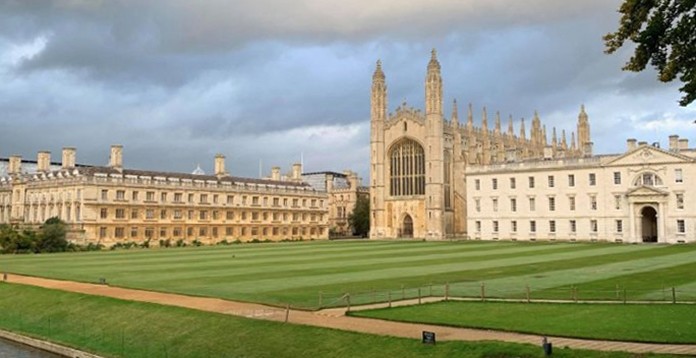
If you do a search for “boy choir” on YouTube and trawl through the countless videos that appear, you might be surprised to see the vast number of boy choirs that exist. It might also surprise you, as it did me, to see that huge numbers of them apparently exist to perform popular music and little else. There are endless boy choir versions of pop songs, folk songs, gospel songs, Christmas carols and music from shows and movies.
It seems that boy choirs are all the rage, especially in America. Many of them are professionally trained; they have colourful uniforms and an unmistakable commercial feel to the presentations. Far be it from me to express cynicism, but perhaps there’s money to be made in the boy choir business.
All this razzmatazz is a far cry from the traditional concept of a boy choir, which in the quieter world of yesteryear was a permanent feature of every cathedral and significant church. Choral music developed during the early middle ages, largely due to the Christian church. It thrived in the cultured atmosphere where learning, the arts, devotion to duty and spiritual values were fundamental to life. In keeping with the traditions of the early church, the singers were always men but boys were needed to add a vocal contrast and also to increase the range of notes available.
In the year 1498 the Emperor Maximilian I moved his court from Innsbruck to Vienna, some three hundred miles to the north-east. He also instructed his court officials to employ a singing master, two bass singers and six boys. This humble start became the foundation of the Vienna Boys’ Choir, perhaps the most famous boys’ choir in the world.
Boys’ choirs are usually made up of pre-pubescent boys technically known as trebles or boy sopranos and whose voices remain unbroken. Some boys have naturally lower voices and can sing in the alto range while much older boys or men provide the tenor and bass parts.
Today, many European churches have permanent boy choirs though since the end of the nineteenth century girls have also been included in some choirs, much to the dismay of church music purists.
Nearly fifty cathedrals in Britain have permanent choirs, most of them running both boy and girl choirs. A few cathedrals still provide choral music on a daily basis, but this is an increasingly rare phenomenon.
We don’t hear much of Martini these days, though whether he has any connection with the eponymous beverage is anyone’s guess. He was an amazingly prolific composer and a well-known teacher who had his own private music school in Bologna. Among his pupils was the young Mozart. Padre Martini was an ordained priest and an avid collector of printed music. His personal library was estimated to have contained a staggering 17,000 volumes and eventually became the basis for the Bologna Civic Library.
This work is a setting of Psalm 69 and the title means “Lord, My God, Assist Me Now.” It’s superbly performed by the Georgia Boy Choir which, in case you’re wondering, is from Georgia the state not Georgia the country. Unlike the Vienna Boys Choir with its five hundred years of history, this choir is relatively recent and was established in 2009 by its Artistic Director and Conductor, David R. White. The choir has already acquired an international reputation.
Not strictly a “boy choir”, this renowned choir from England was established in 1449. Allegri started his musical life as a chorister. He spent almost his entire life in the service of the church, writing music especially for the Sistine Chapel in Rome. Today his most well-known piece is the Miserere Mei, Deus (“Have mercy on me, God) and the piece is shrouded in fascinating bits of history. For years it was sung only during Holy Week at the Sistine Chapel and nowhere else. The Vatican prevented copies of its music being made, so published versions of the work did not exist. However, in 1770, the fourteen-year-old Mozart, who was in Rome with his father, heard the work being performed at the Sistine Chapel and later transcribed it from memory, thus creating the first unauthorized copy. Or so the story goes. In more recent years, evidence has gradually emerged that there might have been illicit copies in circulation before Mozart’s visit.
The work was published in England in 1771 but the version performed today contains a curious error that somehow crept into the work. Because of an unexpected change of key which could have been the mistake of a 19th century copyist, the work contains a top “C” in the soprano part for which the Miserere has become well-known. In this recording, you hear it first it at 01:43. Strangely, this top “C”, the nightmare of many a boy soprano, didn’t appear in Allegri’s original.
 |
 |
 |





